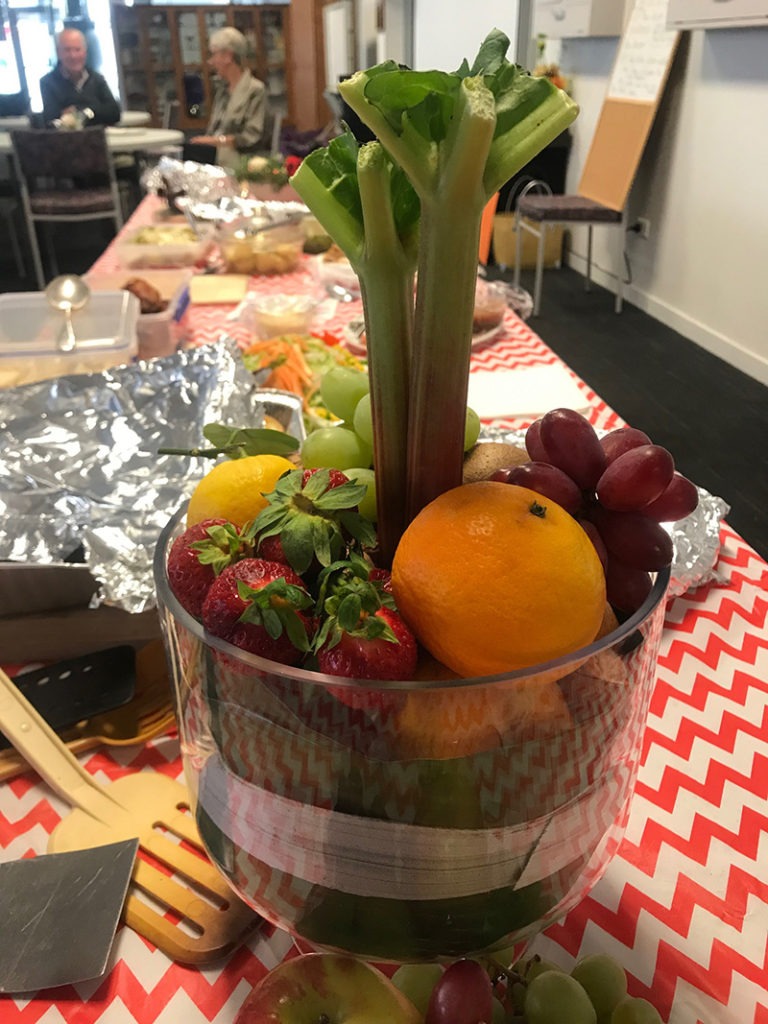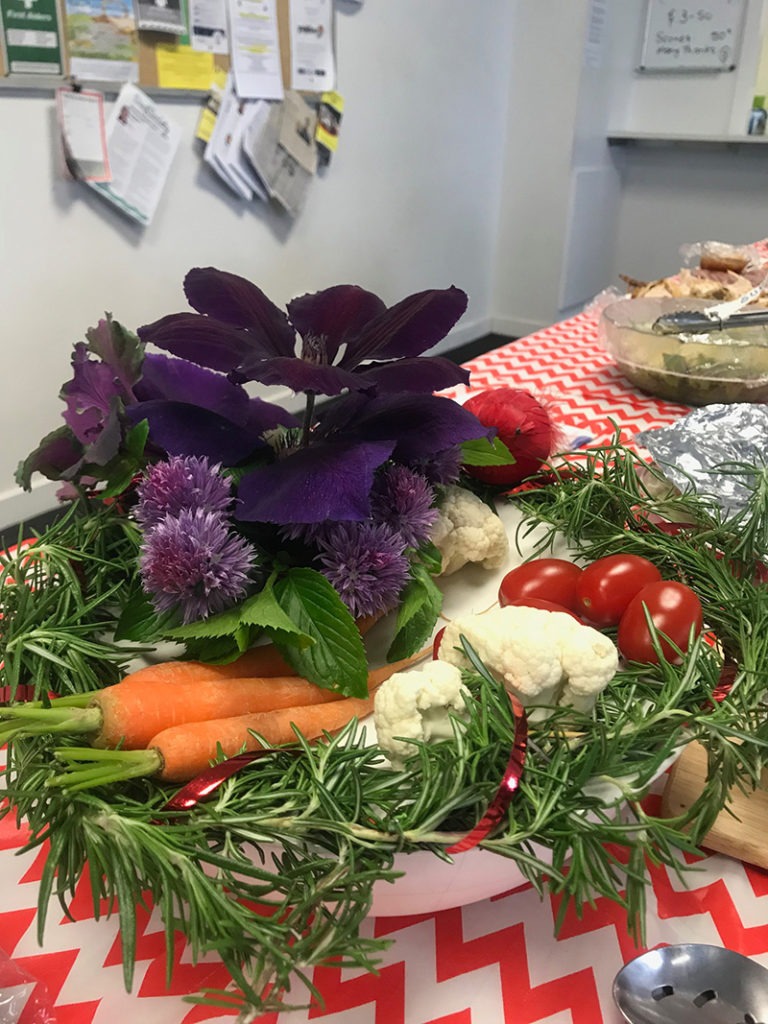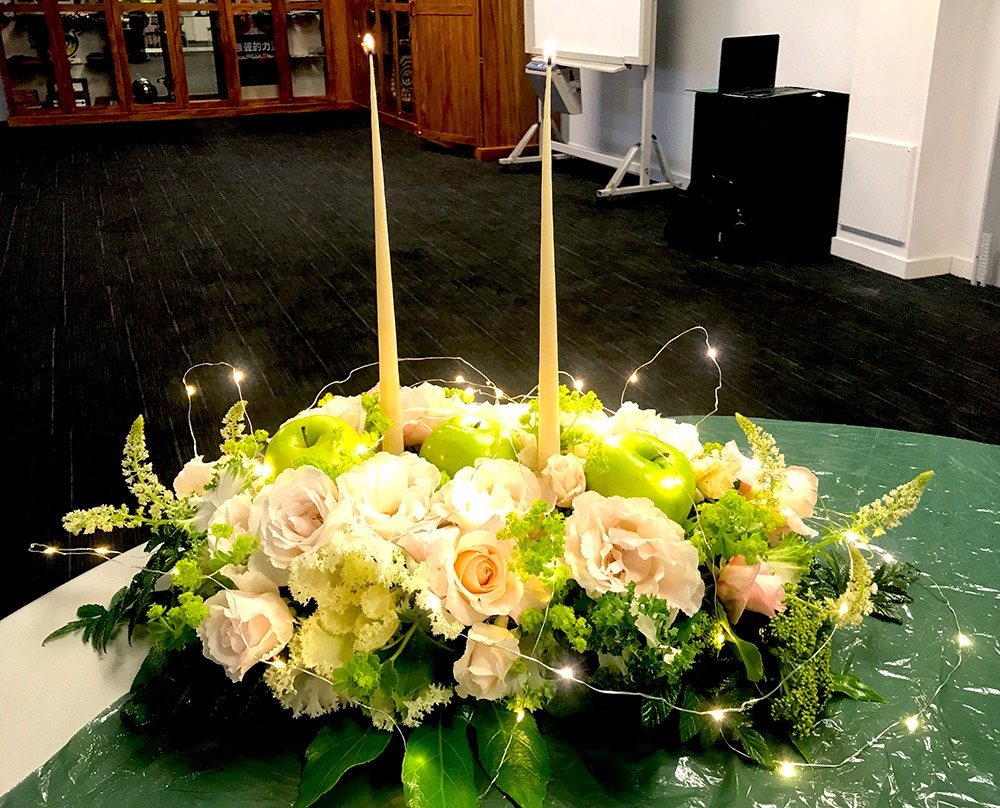Christmas creativity
For the last meeting of the year, members enjoyed a Christmas–themed pot-luck dinner with Elaine Alexander as the guest speaker, a life member of the Avonhead Garden Club, and past member of CHS.
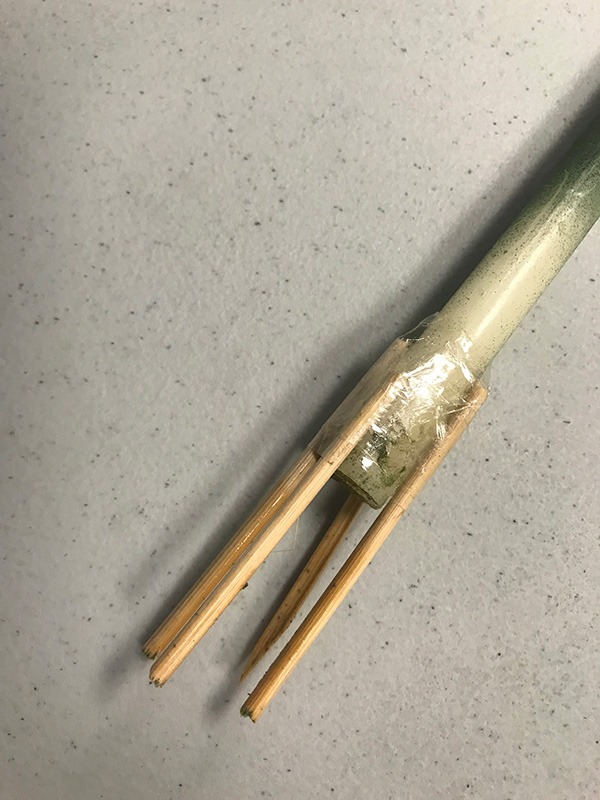
She demonstrated how to create some wonderful centre-pieces for the Christmas table, incorporating fruit and vegetables. One arrangement was composed of Aspidistra leaves arranged in a round glass bowl on a stand. The centre was filled with rhubarb and fruit. The rhubarb could be replaced with a candle. A clever trick to help make the insertion of a candle easier, was to tape a few toothpicks around the base, to anchor the candle into the block of oasis. Another tasty looking design consisted of a bowl of red and purple flowers with a garland of rosemary, and a selection of baby carrots, small tomatoes and cauliflower. The cauli was there to represent her ancestral association with market gardening in New Zealand, in which caulis played a prominent part. A third arrangement was based on a dinner plate set on top of a tall bowl, to give extra height. A brass candlestick created a taller arrangement that elevated it above the food on the table.
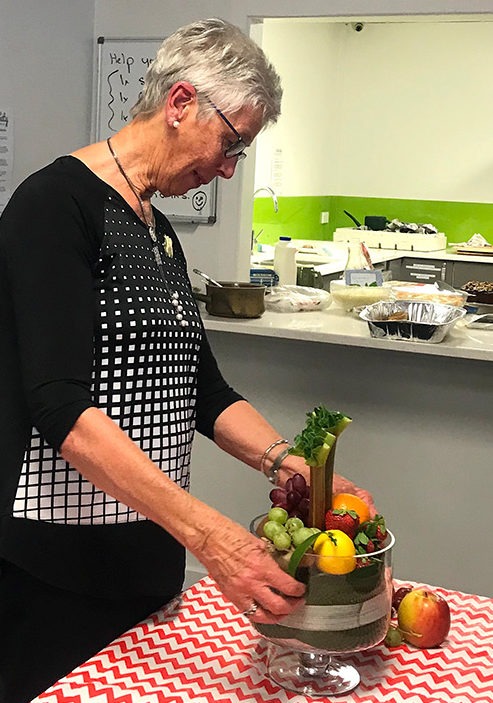
The last was a low, rectangular arrangement, featuring cream roses and green or variegated foliage, with two tapered candles set in it. Some seed lights were threaded over the whole setting to provide an exciting festive sparkle. Elaine has four great grandparents who were market gardeners . Her father grew cabbages and cauliflowers; she said had created an arrangement incorporating cauliflowers for his casket when he passed away.
Another of her ancestors, Walter Hockey, brought seed of the hollow parsnip cultivar into the country. She brought his original recipe for parsnip wine along to show members. Another great-great-grandfather went to live in Waimate and grew vegetables on 29 acres, at Railway Crossing, including 12 ½ acres bearing strawberries. Elaine’s mother had been a member of the Fendalton Garden Club. She herself had lessons from Magaret Watling on which plants to grow and how to use them for floral art.
Elaine had been asked to design and organise the first Cathedral Flower Carpet for the 1990, 150th anniversary of the settlement of Christchurch. Sawdust was provided by the Botanic Gardens, and she organised many people to donate flowers; some were especially grown on land owned by the CHS in Halswell. This famous Flower Carpet was repeated for the next 22 years.
Peter Saunders gave another instalment of A Visual Guide to Gardening through the Year. His potatoes are now covered with netting to protect against Psyllid infection, and the carrots are growing under microfiber cloth to protect against carrot fly. He suggests spraying for brown rot on
peaches as the spores are around, and keep a watch for powdery mildew on apples.
Peter and Sue are already eating their second crop of peas and strawberries. They have a large number of tomato plants; his outdoor ones, mainly cherry types, are enclosed with shade cloth to protect against the
wind. If brown patches caused by tomato wilt fungus appear, the whole leaf and stem should be removed and destroyed or put in the red bin. Put a puff of sulphur (from garden centres) on the wound to seal the cut.
The last of the winter vegetables is the fennel, which should not be grown
near beans as they have a negative effect on each other as could be seen in his photo as his beans were not progressing very speedily.
Phil Ducker pointed out that observation is key in gardening; seek out white-butterfly caterpillars and kill them; be careful with sprays, and if spraying, do so early in the morning before the bees come out.
Keep planting vegetables seedlings for continuity of supply. Try different varieties of beans and save seed for next year. Plant corn, and sow carrots now for the winter crop.
Look out for coddling moth on apples. Hoe for weeds. A useful piece of information: cooked tomatoes are better for you than raw.



